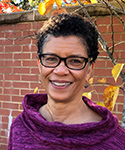Shane Lopez opens “Making Hope Happen” with the story of John, a farmer whose diagnosis destroyed his picture of the future. Working as John’s therapist, Lopez witnessed John redefine his future and recover hope. The experience launched Lopez on a journey to understand the conditions and activities that foster hope.
He discovered that living with hope, even in the face of the challenges of the moment, requires a vision that is beyond our reach and practical ways to make progress toward that vision.
Many congregations and other Christian institutions respond with fear as they see declining membership rolls, decreasing revenue and reduced influence. Yet, in worship we look to God who promises participation in an everlasting reign for all who believe. Somehow, we need to integrate the vision of God’s promises with our current circumstances and recover hope for the moment alongside hope for eternity.
For two years, I had a chance to work in Houston with Charles Rotramel, who has been befriending gang-affected young people for 20 years. One day we were reviewing the results of a psychological assessment indicating that every young person involved in the ministry was suicidal, which meant that other agencies considered the kids were too dangerous to assist.
We had to figure out a way to frame this finding so that the kids would not be abandoned. I recalled Charles having taught me that the kids never expected to reach their 25th birthdays, anticipating a violent death. In the assessments, these young people were considered suicidal because they had no hope of a future. If we could convince the researchers that the kids were hopeless -- which was different from being suicidal -- there was a chance the kids could get the needed services.
Charles had worked in the midst of hopelessness so long that he was no longer surprised by its effects. He worked every day to love those kids into hope for a future by creating conditions for caring adults to build friendships with them, by bringing back to the community those who grew up and made it to adulthood, and by helping them stay in school and find jobs. He did this because of his faith in God and a belief in the future that God has. He helped the young people face their fear with the gifts of friendship and practical help.
Lopez is a researcher for Gallup who defines the “hope cycle” as the three interrelated elements that are required to build hope in this world -- goals, agency and pathways. This simple formula can help faith-based groups determine ways of doing day-to-day work that encourages hope.
Christian institutions face the challenge of translating our hope in the resurrection and new life into the circumstances of this age -- for gang-involved young people, for patients in a hospital and for the work of the institution in a difficult economy. Lopez’s research suggests structuring services to empower participants (as micro-finance efforts create the conditions for entrepreneurship) and encouraging folks to consider multiple ways to achieve their goals. Grounding such steps in the hope of God’s eternal life provides power that is beyond individual perseverance.
How do you measure the hopefulness of your employees, board, members and participants? What can you do to help make hope happen for all?













